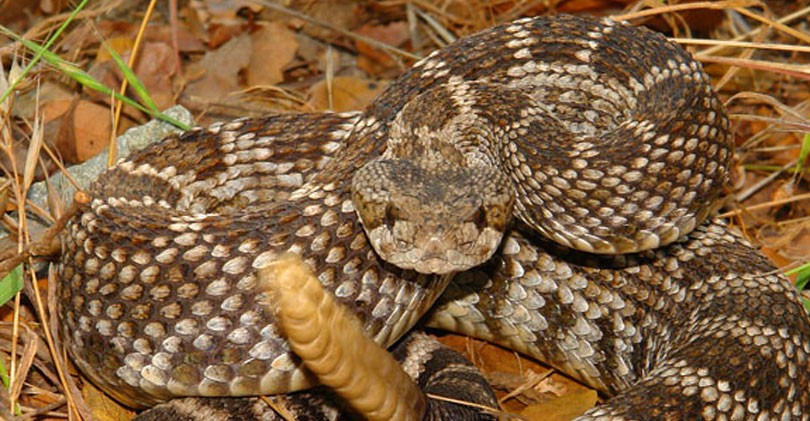(Note: Previously this article included a photo of a Gopher snake that we spotted at the San Diego Botanic Gardens in Encinitas. Gopher Snakes are not dangerous to humans, and they actually help keep rattlesnakes away. In fact, the staff at San Diego Botanic Gardens have never seen a rattlesnake at the gardens. For more information, see HERE to for tips on how to tell the difference between Gopher snakes and Rattlesnakes)
As springtime brings warmer temperatures, more scaly creatures have begun appearing in our yards and parks.
All sorts of wildlife emerge in the spring, and March and April mark the start of rattlesnake season in San Diego County. Recent reports have described increased rattlesnake sightings and a human rattlesnake bite in San Marcos. As the reptiles come out of hibernation, it’s not uncommon to spot them locally, though bites are rare. Most sightings happen between now and October.
“Snakes are most likely venturing out in search of food and to soak up the sun,” said San Marcos Park Ranger Ron Vinluan. “People think they’re going to chase you—that isn’t so. They don’t want anything to do with us.”
If you encounter one of the five varieties of rattlesnakes found in the county, give it space. Calmly back away from it, leave it alone and let it go on its way, Vinluan continued.
Reduce the likelihood of startling a rattlesnake
- Never go barefoot or wear sandals when hiking. Wear sturdy hiking boots with loose-fitting long pants to protect feet and ankles.
- Stay on paths and trails, avoiding tall grass, weeds and brush where snakes may hide.
- Keep your dog on leash while hiking and be aware of what your dog is doing at all times.
- Make sure you can see where you are reaching and that you can see ahead of you. Look for concealed snakes before picking up rocks, sticks or wood.
- Be careful when stepping over doorsteps as snakes like to crawl along the edge of buildings where they are protected on one side.
- Never hike alone. Always have someone with you who can assist in an emergency.
- Teach children early to respect snakes and to leave them alone. Children are naturally curious and will pick up snakes.
What to do in the event of a snake bite
If bitten or you feel a snake or other animal is dangerous, call 911 immediately.
Though uncommon, rattlesnake bites do occur, so have a plan in place for responding to any situation. Carry a portable phone, hike with a companion who can assist in an emergency, and make sure that family or friends know where you are going and when you will be checking in.
The first thing to do if bitten is to stay calm. Generally, the most serious effect of a rattlesnake bite to an adult is local tissue damage which needs to be treated. Children, because they are smaller, are in more danger if they are bitten.
Get to a doctor as soon as possible, but stay calm. Frenetic, high-speed driving places the victim at greater risk of an accident and increased heart rate. If the doctor is more than 30 minutes away, keep the bite below the heart, and then try to get to the doctor as quickly as possible.
The California Poison Control Center advises:
- Stay calm
- Wash the bite area gently with soap and water
- Remove watches, rings, etc, which may constrict swelling
- Immobilize the affected area
- Transport safely to the nearest medical facility
For more information about rattlesnakes in California, visit https://www.wildlife.ca.gov/News/Snake.
For more first aid information please visit California Poison Control.





